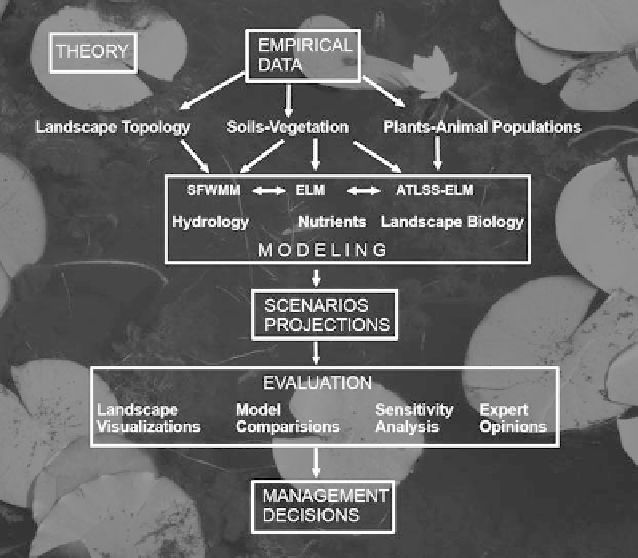Environmental Engineering Reference
In-Depth Information
21.2 The Everglades Integrated Modelling Approach:
General Strategy
Due to its unique ecosystem and to the creation of Everglades National Park, the
interest in the ecological integrity of the Everglades has a long history. The amount
and variety of the collected data is in keeping with the importance of this ecosys-
tem, and ranges from climatological and meteorological data, to biotic data,
sociological and economical data. The last two deriving from opinion polls or
related economical census, as far as they are relevant for the ecosystem. The data
bases in these areas are very good in many respects and the modelling aspect of
the Everglades research makes intensive use of all of those objects and qualities,
concentrating on sources that are important for Everglades restoration on the
landscape level. The goals of this restoration process are twofold: (1) maintaining
the ecosystem-specific traits and processes in situ, and (2) maintaining viable
populations of all native species in situ (Science Sub-group 1994).
In trying to achieve these goals, models and modelling tools are intensively used
to increase understanding and are applied on nearly every hierarchical level of the
research process to integrate the available knowledge (see Fig.
21.3
).
Fig. 21.3 Interplay of data acquisition, modelling, evaluation and final management decision
within Everglades' research

